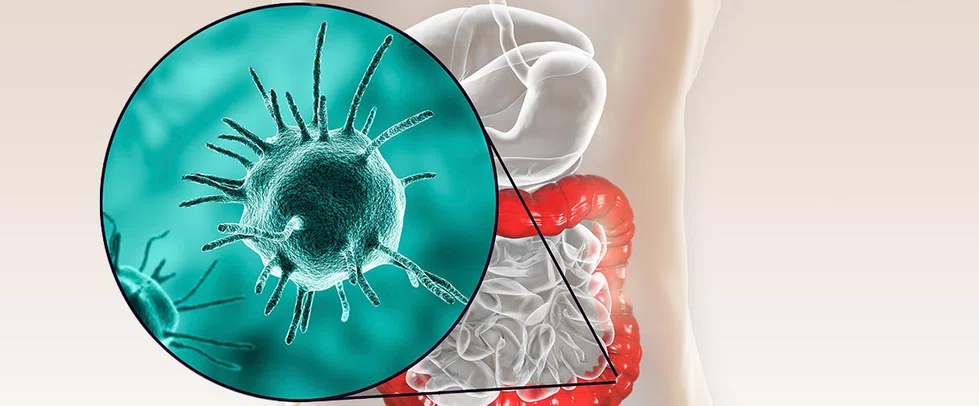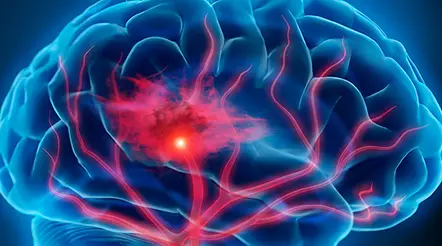


Introduction
Ann Kimball and John W. Johnson Center for Cellular Therapeutics at Houston Methodist
Houston Methodist Dr. Mary and Ron Neal Cancer Center
The Food & Health Alliance within the Houston Methodist Lynda K. and David M. Underwood Center for Digestive Disorders, Immunology Center and the Fondren Inflammation Collaborative
Houston Methodist Cockrell Center for Advanced Therapeutics
Paula and Joseph C. “Rusty” Walter III
Translational Research Initiative
Jerold B. Katz Academy of Translational Research
Infectious Diseases Research Fund
George and Angelina Kostas Research Center for Cardiovascular Medicine
New Endowed Chairs Positions
EnMed
Center for Bioenergetics
result
Clinical Research
Outcomes, Quality and Healthcare Performances
Restorative Medicine
Precision Medicine
Science in Service
of
Medicineresult
President's letter
2022 Metrics
Cycle of Translation
Visionary Gifts of Hope


Introduction

Ann Kimball and John W. Johnson Center for Cellular Therapeutics at Houston Methodist

Houston Methodist Dr. Mary and Ron Neal Cancer Center

The Food & Health Alliance within the Houston Methodist Lynda K. and David M. Underwood Center for Digestive Disorders, Immunology Center and the Fondren Inflammation Collaborative

Houston Methodist Cockrell Center for Advanced Therapeutics

Paula and Joseph C. “Rusty” Walter III Translational Research Initiative

Jerold B. Katz Academy of Translational Research

Infectious Diseases Research Fund

George and Angelina Kostas Research Center for Cardiovascular Medicine

New Endowed Chairs Positions

EnMed

Center for Bioenergetics

From Discovery to Clinic


What is "Discovery to Clinic"?

Clinical Research


Houston Methodist Conducts First-Ever Study into a Challenging Situation

Can Regulating Cellular Aging Mitigate Both Cancer and Heart Disease?

Innovative Treatment for Chronic Rhinitis is Safe and Effective


Masters of Disguise: Glioblastomas Trick the Immune System by Masquerading as Reproductive Tissue
Improved Options for Patients with Severe Retinal Vascular Disease

A New FDA-Approved Treatment for Sufferers of Chronic Constipation

Houston Methodist joins the Gulf Coast Consortia

Outcomes, Quality and Healthcare Performance


New Findings on RNA Helicases May Yield New Intestinal Disease Therapy

Houston Methodist and Pennsylvania State University Collaborate on a Smartphone App That Could Revolutionize Stroke Diagnosis

New Frontiers to Improve Cardiovascular Medicine and Disease Management

Ongoing Lessons in a Pandemic

Transplants can Boost Survival Rate of Patients with Unresectable Liver Cancers

Telehealth Video Visits During the COVID-19 Pandemic – a Glimpse into the Future?

SARS-CoV-2 Induced Chronic Oxidative Stress and Endothelial Cell Inflammation May Increase Likelihood of Cardiovascular Diseases and Respiratory Failure

Restorative Medicine


Lessening Pain After Knee Replacement Surgery

Do Motor Neurons First Die in the Brain? Study Provides Clues about ALS Origins

Bringing Back Hand Function in People with Complete Spinal Cord Injury

Novel Vascular Engineering Platforms Are a Boon for Bioengineering

Ultra-high-Resolution Scanner Reveals if Knee Injury Advances to Osteoarthritis

Houston Methodist Model Demonstrates Reversal from Heart Failure State, Creating the Potential for Innovative Treatment Avenues

Precision Medicine


Rapidly Scalable, All-Inducible Neural Organoids Could Facilitate Drug Screening for Neurological Diseases

Importance of the Coronary Artery Calcium Score in Risk Assessment and Prevention of Atherosclerotic Cardiovascular Disease

COVID-19 Infection in Crucial Brain Regions May Lead To Accelerated Brain Aging

Interleukin 9 Secreting Polarized T Cells Show Potential in Solid and Liquid Tumor Treatment

The NanoLymph: Implantable. Adaptable. Anti-cancer




Discovery to Clinic

Outcomes, Quality and Healthcare Performance

New Findings on RNA Helicases May Yield New Intestinal Disease Therapy
New Findings on RNA Helicases May Yield New Intestinal Disease Therapy

RNA helicases, which are found in all species, are a family of highly conserved enzymes that are involved in various aspects of RNA metabolism. Interestingly, RNA helicases also function as viral RNA sensors and play critical roles in immune responses against viruses. There is a plethora of in vitro studies regarding functions of RNA helicases in immune responses; however, there is a paucity of in vivo studies (research performed within a living organism) detailing their tissue- or cell-specific functions and mechanisms of action. This is largely because global knockout (removing the gene from every cell in the body) of RNA helicases is lethal.
The intestinal tract harbors diverse microbiota. While commensal microorganisms promote health in the human host, myriad enteric pathogens, which include enteric viruses, pose a serious threat since they can cause acute and chronic diseases. The epithelial cells that line the intestinal tract carry various DNA and RNA virus sensors that detect invading enteric viruses.
The host innate immune system acts as the first line of defense against viral infections by detecting viral components such as viral DNA and RNA. So far, researchers have identified several DNA and RNA virus sensors that can activate inflammasomes (cytosolic multiprotein oligomers) crucial for host defenses against viruses. One interesting member of the RNA helicase family is the DEAH-box helicase 15 (DHX15), which senses both single-stranded and double-stranded RNA viruses in vitro.

Severe acute respiratory syndrome-coronavirus-2 (SARS-CoV-2) is an RNA virus that causes the ongoing coronavirus disease 2019 (COVID-19) pandemic. Gastrointestinal symptoms and fecal shedding of SARS-CoV-2 RNA are frequently observed in COVID-19 patients, and SARS-CoV-2 could efficiently infect human intestinal epithelial cells. Thus, our findings on DHX15 in controlling enteric RNA virus-induced intestinal inflammation may provide potential therapeutic applications involving targeting RNA helicase DHX15 to control SARS-CoV-2 and the intestinal inflammation induced by SARS-CoV-2.


Zhiqiang Zhang, PhD
To add value to this area of research, Zhiqiang Zhang, PhD, Associate Professor of Transplant Immunology in Surgery, generated intestinal epithelial cell specific DHX15 knockout mice to investigate DHX15 function in vivo.
Using short hairpin RNA knockdown in human cells, Zhang demonstrated that DHX15 is required for intestinal inflammation induced by enteric viruses in vitro. Moreover, Zhang specifically examined the in vivo functional role of DHX15 in intestinal antiviral response and concluded that DHX15 is required for controlling RNA-virus induced intestinal inflammation in vivo.
Several intestinal diseases, including intestinal bowel disease, entail intestinal inflammation, which is affected by diet, genetics, immunity as well as microbial factors. The role of enteric viruses in intestinal inflammation and intestinal bowel disease is not fully understood and needs to be further investigated. The human intestine is estimated to contain at least 108-1010 virus-like particles per gram; with different enteric viruses likely having varying affinities towards the gut. Research results by Zhang on DHX15, published in Cell Reports in 2021, sheds some light on how enteric viruses influence health and disease. It is likely that efforts will be made soon to develop potential therapeutics targeting DHX15 to alleviate intestinal inflammation.
Interestingly, the causative virus for the COVID-19 pandemic SARS-CoV-2 — is an RNA virus that possibly induces intestinal inflammation since the SARS-CoV-2 receptor (angiotensin-converting enzyme 2) is widely expressed in the human intestine. Furthermore, studies have demonstrated fecal samples of COVID-19 patients to be SARS-CoV-2 positive. It is quite likely that SARS-CoV-2 infects the human body via the intestinal tract like enteric viruses in addition to the respiratory route.
“Severe acute respiratory syndrome-coronavirus-2 (SARS-CoV-2) is an RNA virus that causes the ongoing coronavirus disease 2019 (COVID-19) pandemic. Gastrointestinal symptoms and fecal shedding of SARS-CoV-2 RNA are frequently observed in COVID-19 patients, and SARS-CoV-2 could efficiently infect human intestinal epithelial cells. Thus, our findings on DHX15 in controlling enteric RNA virus-induced intestinal inflammation may provide potential therapeutic applications involving targeting RNA helicase DHX15 to control SARS-CoV-2 and the intestinal inflammation induced by SARS-CoV-2,” said Zhang.
The current understanding in the literature of the enteric gut virome is rudimentary. How enteric viruses affect intestinal homeostasis and their effects on inflammation and intestinal diseases needs to be systematically investigated. Future studies on other RNA helicases, including DEAH-box helicases, may shed more light on these important signaling cascades and lead to potentially useful therapeutics.
More from Discovery to Clinic














